All these virtues are embodied in a very strong personality who has never broken her principles, which raised her to the status of a true mentor of contemporary prehistorical archaeology. Silvia Marinescu-Bîlcu was both a leader of doctor's degree theses, and assumed the role of a trainer of at least two generations of prehistorian archaeologists or researchers. Her doctor's degree applicants have been supported and guided step by step, like chicks learning to fly from their mother. Paradoxically, in spite of her proverbial standards, she is endowed with a rare sensitivity and experienced an intense empathy for the emotions of her collaborators and doctor's degree applicants.
 |
 |
 |
Like Vladimir Dumitrescu, Silvia Marinescu-Bîlcu emphasized the role of morality in archaeology. Silvia Marinescu-Bîlcu did not make any scientific compromises. Her flawless behaviour often caused her a lot of trouble and problems during the communist era, but also after 1990! Thus, most doctors’ degree applicants have become also her disciples! The doctor's degree sessions or meetings with Silvia Marinescu-Bîlcu have become a true prehistory school that trained outstanding archaeologists or researchers such as Radian Romulus Andreescu, Puiu Haşotti, Dragomir Popovici, Sabin Adrian Luca, Valentina Voinea, Roxana Dobrescu, Stănică Pandrea, Cristian Micu, Cătălin Bem, Mihai Tomescu, Adrian Bălăşescu, Dragoş Moise, Valentin Radu, Cornel Beldiman, Emilian Alexandrescu, Florin Vlad, Costel Haită, Pavel Mirea, Valentin Parnic or Cătălin Lazăr. The endeavours to bring together in a unitary strategy the prehistorical archaeological research on the two banks of the Danube took shape in the doctor's degree thesis of the Bulgarian archaeologist from Oreahovo, Evghenia Naidenova.
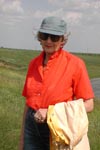 |
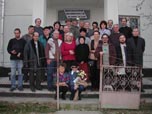 |
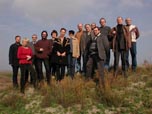 |
The Lady of Romanian prehistory has a different outlook upon the scientific phenomenon and its cultural integration. During the period of uncertainties and even chaos that occurred also in Romanian archaeology after "the events of December 1989” Silvia Marinescu-Bîlcu was one of the brilliant minds of Romanian scientific research. Although opposed to a system of excessive centralization, she pleaded in favour of unitary research methods within a strategy likely to make known in the whole world the most important Romanian archaeological finds and researches. Thus, Tîrpeşti and Drăguşeni are archaeology monographs standing for models, not just in Romanian research, but also recognized worldwide. Not by chance, the first monograph dedicated to the site of Tîrpeşti (Marinescu-Bîlcu 1981) was published at Oxford, in the prestigious BAR series, and the second one, Drăguşeni (Marinescu-Bîlcu, Bolomey 2000), was edited by the famous German Archaeological Institute and "Vasile Pârvan” Institute of Archaeology in Bucharest. She was awarded the Romanian Academy Prize for the Tîrpeşti archaeological monograph in 1981. Outstanding personalities of European archaeology have become her friends or collaborators, including M. Garašanin, N. Tasić, Bogdan Brukner, from Serbia, Nandor Kalicz, Janos Makkay from Hungary, Jan Pavúk from Slovakia, Vladimir Dergacev from Moldova, Henrieta Todorova from Bulgaria, Arend von Mayer from Germany, John Chapman and Douglas Bailey from Great Britain. Practically, most international collaborations in the field of prehistory benefited from the relevant counsel of Mrs Silvia Marinescu-Bîlcu.
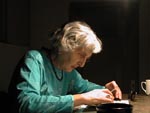 |
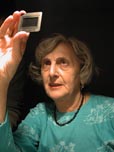 |
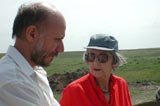 |
She has always tackled with the highest competence and responsibility all the archaeological finds she took part in, not just the prehistoric ones. Thus, Silvia Marinescu-Bîlcu elaborated articles and studies on hallstatt or Geto-Dacian archaeological material or put to good use numismatic finds.
 |
 |
 |
One of the characteristics of her scientific activity is the direct approach to Romanian and south-east European prehistory archaeology issues, such as Criş, Precucuteni and Cucuteni cultures, the linear pottery or Gumelniţa cultures, the relations with the south-east European, Aegean and Micro-Asian or Anatolian Neo-Aeneolithic world, to the issues of spiritual life, proving herself a unique expert in the study of anthropomorphic and zoomorphic statuettes.
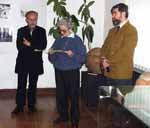 |
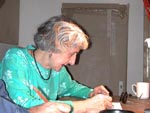 |
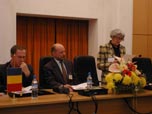 |
Silvia Marinescu-Bîlcu faced with serenity and dignity the hostility of colleagues and archaeologists, without giving up her principles of a lifetime. Upon her 70th anniversary we find her the same old self, full of distinction, elegance and serenity. We wish her to keep her soul for ever young, and may her well known energy enlighten her scientific activity yet many years on!
 |
 |
![]()
